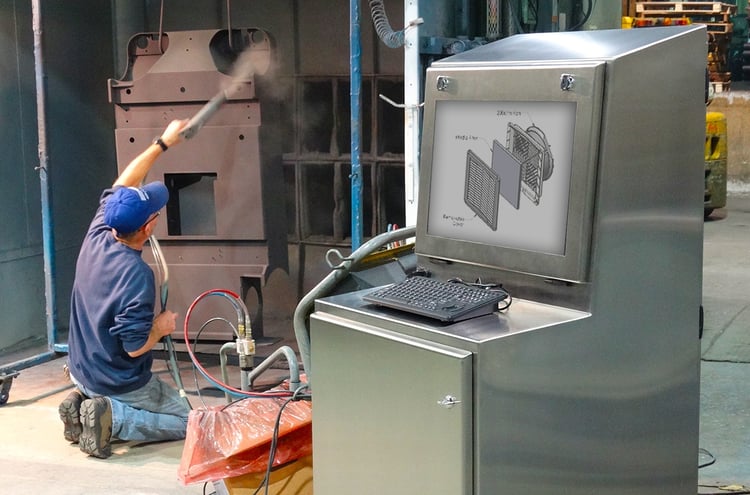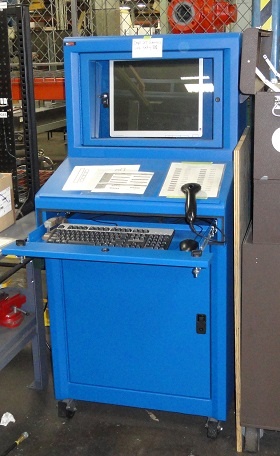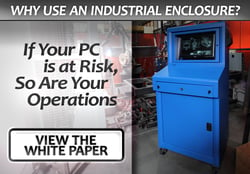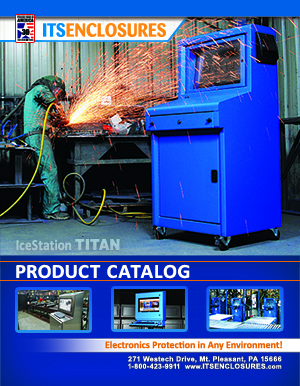
In most manufacturing settings, electrical and electronic equipment is housed in an industrial computer enclosure that is specifically designed to protect against the exterior environment (which is often harsh or hazardous). However, even in a sealed NEMA rated enclosure, moisture and water can enter the enclosure under a variety of circumstances. The designated person in charge of quality control should note issues that may occur and stop them before they have a chance to destroy equipment that is vital for the company.
Condensation is defined as water that collects on a cold surface when humid air makes contact. Small amounts of moisture can greatly damage electronics, shorten their lifetime and affect the overall performance of the internal components. When it comes to condensation, corrosion is also a serious concern. Critical electronic mechanisms may rust over time, which will render them useless.
Moisture can penetrate the inside of an enclosure through a minor vent, defective door, filtered fan system or a poorly sealed cable entry point. During regular wash down, it is possible for the high pressure spray and cleaning solution to penetrate around the sealed enclosure doors and gaskets. If not detected, mold or fungi can form in these small areas and slowly grow to become an enormous problem.
 In humid environments, moisture may enter the enclosure when the door is simply open for routine service or maintenance. Also, temperature fluctuations between the inside and outside of the computer enclosure can cause condensation, which can make its way into the enclosure. Water always has a way of getting into the tiniest spaces if not properly protected!
In humid environments, moisture may enter the enclosure when the door is simply open for routine service or maintenance. Also, temperature fluctuations between the inside and outside of the computer enclosure can cause condensation, which can make its way into the enclosure. Water always has a way of getting into the tiniest spaces if not properly protected!
Naturally, it is advisable to install a “closed-loop” cooling solution for humid, moisture prone environments. Closed loop cooling systems are specifically designed to mount to an enclosure and remove heat, without letting outside air into the sealed enclosure. To ensure electronics are running at optimum levels, the closed loop system will bring the temperatures below the ambient outside temperature.
Examples of closed loop cooling systems include air conditioners, vortex coolers and heat exchangers (heat exchangers will not cool below the ambient temperature). These systems usually employ a thermostat and/or humidity control for monitoring. Closed loop systems are generally “non-condensating.” The only time condensation may occur is if there is a dramatic temperature fluctuation to the system (i.e. switching thermostat from 90° F to 65° F). In fact, air conditioners and vortex coolers can often work to remove moisture from the inside of the computer enclosure.
When searching for the best enclosure solution, make sure that it is built to withstand water from entering the cabinet. Properly sealed enclosures will prolong the life of expensive and imperative electronics. As always, downtime can be costly, so it is always wise to keep all electronics up and running as long as possible.
Looking for the best cooling solution for your company? Click Here
HAVE QUESTIONS? LET US KNOW HOW WE CAN BEST ASSIST YOU! CONTACT AN 'ITSENCLOSURES EXPERT' AT 1-800-423-9911 -OR- SEND US AN EMAIL: INFO@ITSENCLOSURES.COM




